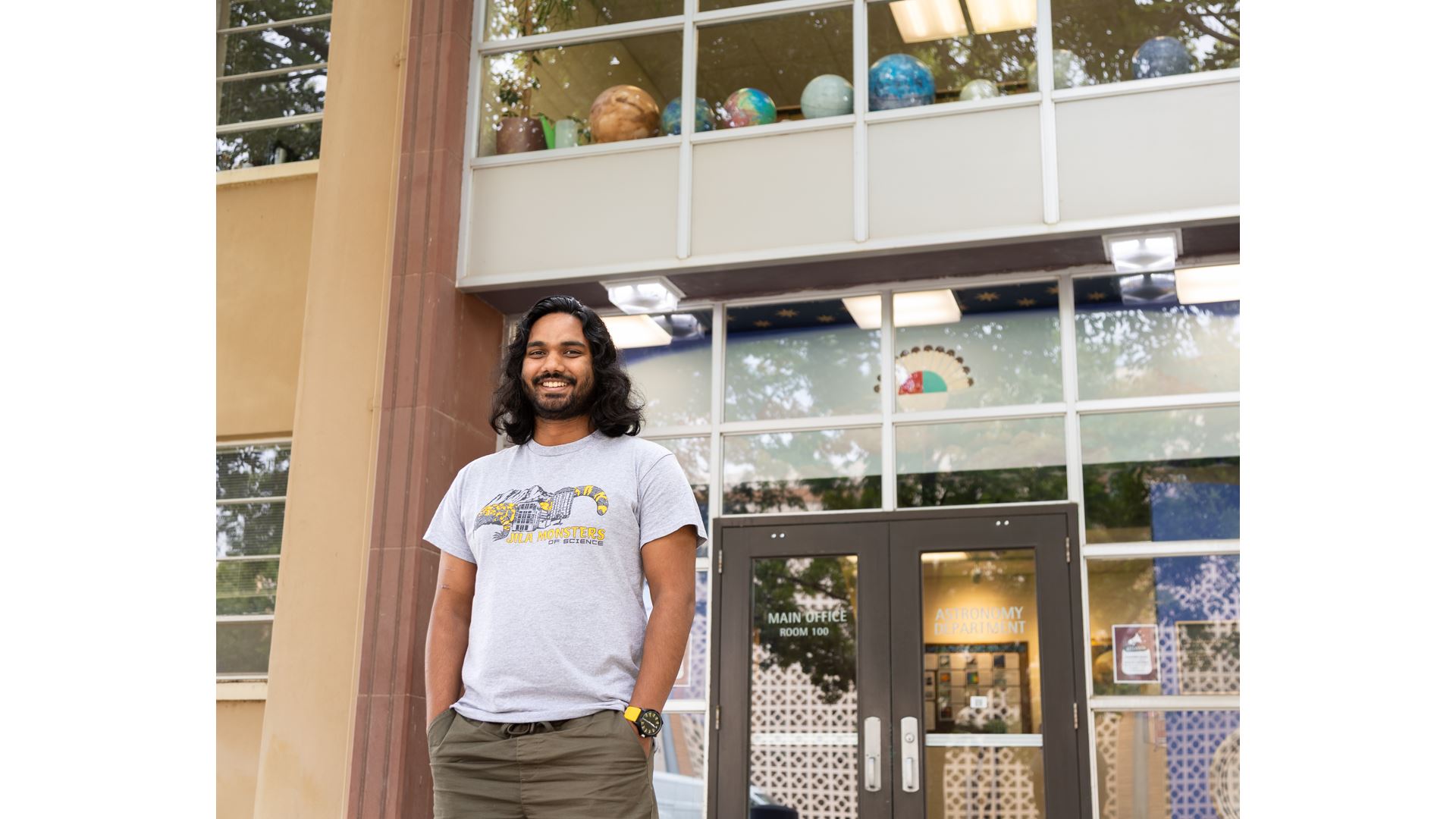New Mexico State University Astronomy Assistant Professor Juie Shetye and her Ph.D. student Aman Priyadarshi Kumar are driving a new collaboration that bridges international teams and two solar observatories.
The Dunn Solar Telescope in Sunspot, New Mexico observes specific regions of the sun in exceptional detail, focusing on features too small for most other solar telescopes to see. In space, India’s groundbreaking solar space mission Aditya-L1 makes continuous and unobstructed observations of the entire disk of the sun. Shetye and Kumar saw an opportunity to bring the data from these two instruments together to streamline solar research and build a relationship between NMSU and India’s growing solar research community.
To pursue this collaboration, Shetye arranged for Kumar to visit the Inter-University Centre for Astronomy and Astrophysics (IUCAA) in Pune, India this past summer. IUCAA is an independent research institute designed to strengthen astronomy groups across Indian universities, covering research in fields such as solar physics, cosmology, gravity and instrumentation.
“This visit is a part of multi-institution collaboration that turns solar images into timely, actionable information for real-world resilience,” Shetye said. “The goal is better space weather forecasting that delivers earlier and more dependable warnings to protect satellites, GPS and communications, aviation and power grids.”
Kumar met with Senior Professor Durgesh Tripathi, principal investigator of the Solar Ultraviolet Imaging Telescope, or SUIT, on Aditya-L1 to discuss how data from their mission could best work with data from Dunn Solar Telescope. He spent four days reviewing SUIT data, cross-referencing with Dunn Solar Telescope’s observing logs and helping develop strategies for co-observing eruptions on the sun.
“The goal was a realistic plan for joint science — what to look for, how to coordinate and what data combinations are most informative,” Kumar said. “The trip grew my international network in solar physics and gave me hands-on experience with a new space mission’s culture, which is huge for me as a first-year Ph.D. student.”
Aditya-L1 is the only solar observatory that makes continuous observations of the full disk of the sun in near-ultraviolet wavelengths, producing data that is highly sought-after in solar research. Through this collaboration, Shetye and Kumar plan to use Aditya-L1’s uninterrupted, full-disk data alongside Dunn Solar Telescope’s high-resolution observation windows to support their work on solar eruption events.
“This setup helps us catch fast events, bridge bad weather gaps and translate observational data into applicable information about space weather,” Kumar said. “We’re building a clean, searchable index so other groups can quickly find events observed by the Dunn Solar Telescope and request data. Publishing this will put a useful tool in the community and bring attention to our research group.”
-30-
CUTLINE: NMSU astronomy Ph.D. student Aman Priyadarshi Kumar visited Inter-University Centre for Astronomy and Astrophysics (IUCAA) in Pune, India this past summer to drive an international collaboration with the Indian research institute. (NMSU photo by Sarah Kimmerly)
CUTLINE: The team Aman Priyadarshi Kumar worked with during his IUCAA visit. (Photo by Aman Priyadarshi Kumar)
CUTLINE: Aman Priyadarshi Kumar presenting to the SUIT team at IUCAA. (Photo by Aman Priyadarshi Kumar)

